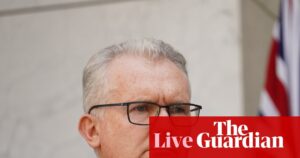
The debate over Australia’s immigration policy has reached a fever pitch in Canberra, with prominent Liberal politicians such as Andrew Hastie and Jacinta Price advocating for a reduction in immigration rates. However, a new analysis from the Australian National University (ANU) suggests that Coalition governments have historically been more responsible for promoting a “big Australia.”
Professor Alan Gamlen from the ANU Migration Hub shared insights on the 7 News Podcast “The Issue,” highlighting that both major political parties engage in doublespeak regarding migration. “Right-leaning parties tend to talk tough on immigration to appease nationalist factions within their ranks, but they often maintain open policies to keep businesses satisfied with a steady labor supply,” Gamlen explained. “Conversely, left-leaning parties publicly support migration-driven diversity but implement strong labor market regulations that can restrict migration.”
Historical Context of Immigration Policies
The ANU’s analysis reveals that Coalition governments have generally expanded temporary migration. This includes initiatives like tying universities to international student fees, creating the 457 visa, expanding post-study work rights, and signing nearly 70 percent of Australia’s working holiday migration agreements. In contrast, Labor governments have frequently tightened immigration policies by raising financial, compliance, and labor standards for students and skilled workers, and introducing stricter integrity measures.
Current Immigration Trends
Under the Albanese Government, annual net overseas migration peaked at 555,000 when borders reopened post-COVID-19, but has since decreased by 40 percent. Despite this reduction, there is mounting political and public pressure on Labor to further cut immigration rates. According to Guardian Essential polling, 53 percent of Australians believe the current permanent migration cap for 2025-2026 of 185,000 is too high.
Populist parties are gaining traction globally, with figures like Donald Trump and Nigel Farage leading the charge in the US and UK, respectively. The latest Newspoll indicates Pauline Hanson’s One Nation party holds an 11 percent primary vote in Australia.
Comparisons with Global Trends
Despite the rise of populist, anti-immigration parties abroad, Professor Gamlen remains skeptical about a similar movement taking over in Australia. “Although we often compare ourselves with the US and the UK, they are fundamentally different from Australia,” he noted. “One significant difference is that they have functionally open borders, unlike Australia, which has a carefully managed immigration system.”
Gamlen attributes this to Australia’s status as an island nation and its well-oiled governmental and democratic institutions that manage immigration effectively. He emphasizes that immigration is a crucial aspect of Australia’s modern narrative.
Recommendations for Policy Improvement
Gamlen advises Prime Minister Anthony Albanese to re-establish an independent Immigration Department focused on visa compliance and to create an independent research bureau on migration. “Restoring concentrated policy expertise in migration within a single empowered agency would improve the quality of debate and lead to better deliberation in parliament,” he asserted.
“If they do those two things and establish a common set of reliable facts for discussion, it will enhance the quality of the debate,” Gamlen said.
As Australia navigates its future immigration policies, the balance between economic needs and public sentiment remains a delicate dance. The ongoing debate underscores the complexities of managing a diverse and growing nation.







